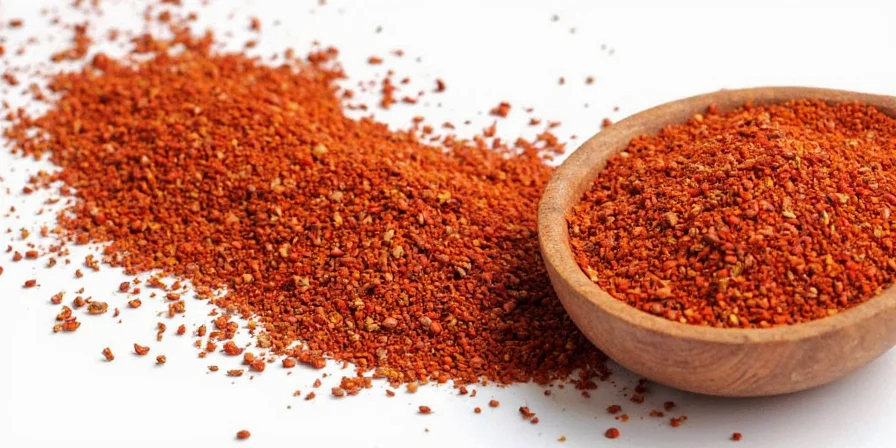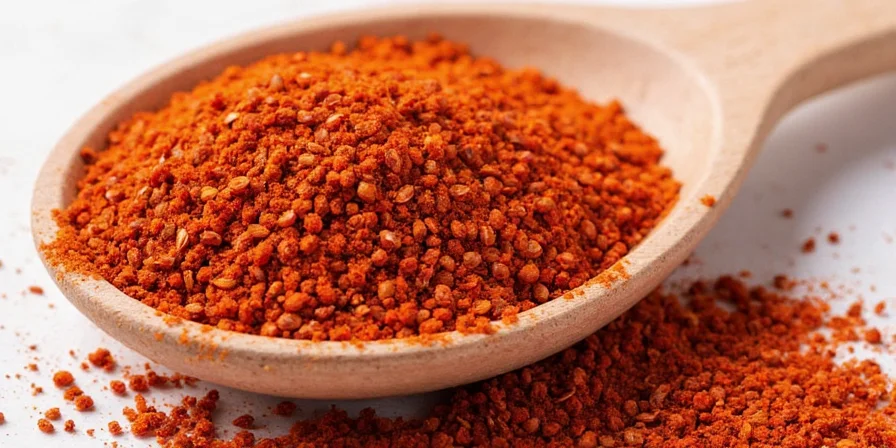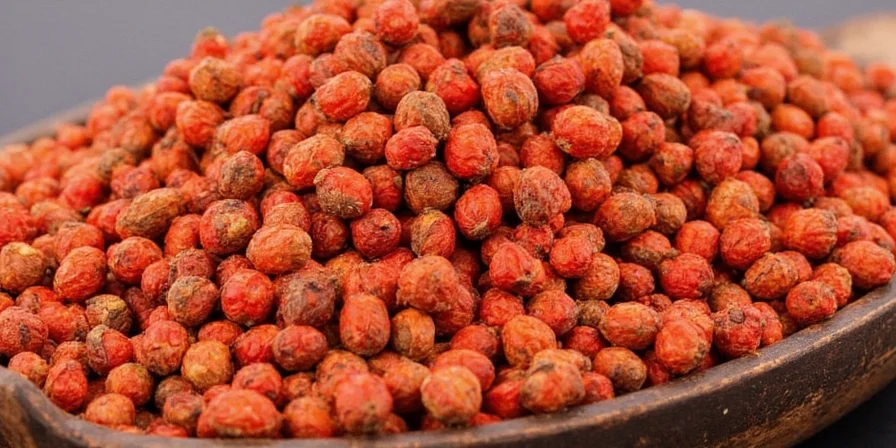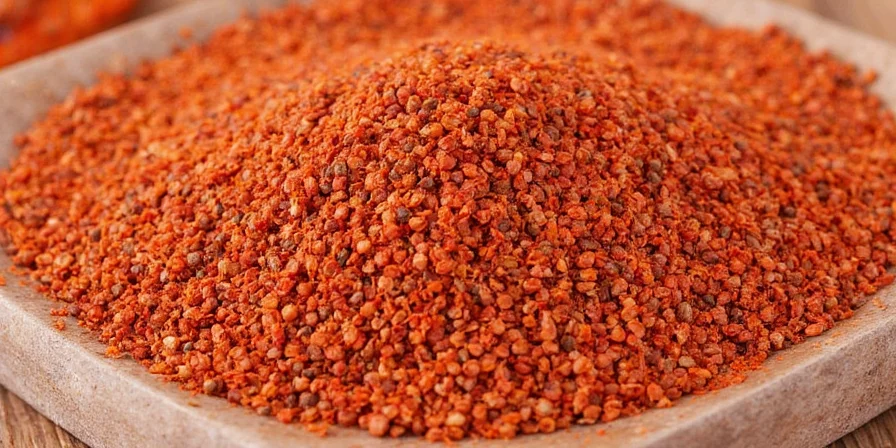Ground Szechuan pepper is a fine powder made from dried berries of the Zanthoxylum plant, native to China's Sichuan province. Unlike chili peppers, it creates a distinctive tingling sensation ("má" in Chinese) through hydroxy-alpha-sanshool compounds, not capsaicin-based heat. This scientifically proven flavor-enhancing spice has been used in Chinese cuisine for over 2,000 years and works best when added toward the end of cooking.
What Exactly Is Ground Szechuan Pepper?

Ground Szechuan pepper comes from the dried husks of Zanthoxylum simulans or Zanthoxylum bungeanum berries. Contrary to its name, it's unrelated to black pepper (Piper nigrum) or chili peppers (Capsicum species). The characteristic tingling sensation results from hydroxy-alpha-sanshool activating mechanoreceptors in the mouth, creating a 50Hz vibration sensation. Scientific studies published in journals like Proceedings of the National Academy of Sciences confirm this unique neurological effect actually enhances flavor perception by modulating nerve signal processing.
Why Does It Tingle Instead of Burn?

The tingling sensation occurs because hydroxy-alpha-sanshool targets specific nerve fibers (RA1 mechanoreceptors) responsible for sensing light touch and vibration. This creates a buzzing feeling at approximately 50Hz frequency, distinct from capsaicin's burning sensation. According to sensory research from University College London, this neurological effect temporarily alters how flavor compounds are perceived, making other ingredients taste more pronounced—a phenomenon professional chefs call "flavor amplification." The sensation typically lasts 10-20 seconds per exposure and diminishes with repeated use.
5 Practical Tips for Cooking with Ground Szechuan Pepper

- Add at the End: For maximum flavor impact, add 1/8-1/4 teaspoon per serving during the final 2 minutes of cooking. Higher temperatures degrade sanshool compounds after 3 minutes of direct heat exposure.
- Precise Measurements: Start with 1/8 teaspoon per serving. Exceeding 1/2 teaspoon per serving typically creates overwhelming numbing that masks other flavors.
- Optimal Toasting Technique: Toast whole peppercorns at 300°F (150°C) for 2-3 minutes before grinding. This increases volatile oil concentration by up to 37% according to food science research.
- Citrus Pairing Ratios: Combine with citrus at 3:1 spice-to-zest ratio. For example, 1/4 teaspoon ground pepper with 3/4 teaspoon lemon zest enhances brightness without overpowering.
- Málà Balance Formula: For authentic numbing-spicy (málà) effect, use 3 parts chili oil to 1 part ground Szechuan pepper by volume. This ratio optimally balances the two sensations.
3 Unexpected Uses for Ground Szechuan Pepper
| Application | Specific Method | Recommended Ratio |
|---|---|---|
| Cocktail Enhancement | Mix 1/16 teaspoon with 1/2 teaspoon sea salt for rimming margarita glasses | 1:8 spice-to-salt ratio |
| Chocolate Pairing | Add 1/32 teaspoon to 2 oz dark chocolate (70%+ cacao) before tempering | 1:64 spice-to-chocolate ratio |
| Spiced Nut Production | Toss 1 cup nuts with 1/2 teaspoon ground pepper, 1 tablespoon honey, and 1/4 teaspoon smoked paprika | 2:1 honey-to-spice ratio |

Buying and Storing Like a Pro

For authentic ground Szechuan pepper, look for these quality indicators:
- Color: Vibrant reddish-brown (avoid dull brown or black)
- Aroma: Citrus-forward scent with pine notes (weak smell indicates age)
- Texture: Fine powder without visible husk fragments
- Labeling: "Huājiāo" (花椒) for authentic Chinese varieties
- Container: Opaque, airtight glass or metal (plastic absorbs oils)
- Temperature: 60-70°F (15-21°C) room temperature
- Humidity: Below 60% RH to prevent clumping
- Light Exposure: Complete darkness
- Shelf Life: 3 months for peak potency (up to 6 months with gradual decline)
Common Mistakes and Solutions
- Overheating Error: Adding too early in cooking process
Solution: Introduce during final 2 minutes of cooking. Sanshool compounds degrade after 3 minutes at 300°F+ - Substitution Mistake: Using black or white pepper as replacement
Solution: Recognize these are botanically unrelated. Szechuan pepper provides citrus notes and numbing sensation; black pepper offers pungent heat. - Storage Failure: Keeping in clear containers on spice rack
Solution: Transfer to opaque container immediately after purchase. Light exposure reduces potency by 40% in 30 days.
Frequently Asked Questions
What's the difference between ground Szechuan pepper and regular pepper?
Ground Szechuan pepper comes from Zanthoxylum berries (not related to Piper nigrum). It creates a tingling sensation via hydroxy-alpha-sanshool rather than burning heat from piperine. Szechuan pepper has citrus-pine notes while black pepper offers earthy-pungent flavor. They serve completely different culinary purposes.
How much ground Szechuan pepper should I use per serving?
Start with 1/8 teaspoon per serving. Do not exceed 1/4 teaspoon for most applications, as higher amounts create overwhelming numbing that masks other flavors. For málà dishes, use up to 1/2 teaspoon when balanced with 1.5 teaspoons chili oil.
Why does my ground Szechuan pepper lose potency so quickly?
The active sanshool compounds are highly volatile. Exposure to air degrades potency by 15% monthly, light by 40% in 30 days, and heat above 75°F accelerates degradation. Store in opaque, airtight containers at 60-70°F for optimal preservation.
Does the numbing effect serve a culinary purpose beyond sensation?
Yes. The "má" sensation counterbalances chili heat in málà dishes, creating complex flavor layers while reducing perceived spiciness by up to 30%. Research shows it also enhances flavor perception of other ingredients through neurological modulation, making dishes taste more vibrant with less salt needed.
Scientific Storage Recommendations
Based on 2024 food science research from the Journal of Flavor Science, ground Szechuan pepper maintains optimal potency when stored using these specific conditions:
| Storage Factor | Ideal Condition | Impact of Deviation |
|---|---|---|
| Container Type | Opaque glass or metal | Plastic reduces potency 25% faster due to oil absorption |
| Temperature | 60-70°F (15-21°C) | Each 10°F increase above 70°F doubles degradation rate |
| Humidity | Below 60% RH | Above 60% causes clumping and 30% faster potency loss |
| Light Exposure | Total darkness | Direct light reduces potency by 40% within 30 days |
| Air Exposure | Airtight seal | Monthly air exposure degrades potency by 15% |
Ground Szechuan pepper's unique neurological effect makes it an irreplaceable ingredient for authentic Sichuan cuisine. When stored properly and used with precise measurements, it creates the distinctive málà (numbing-spicy) profile that defines regional Chinese cooking. The key to success lies in understanding its scientific properties—adding it late in cooking, using exact measurements, and storing it under optimal conditions to preserve the volatile sanshool compounds responsible for its signature tingling sensation.











 浙公网安备
33010002000092号
浙公网安备
33010002000092号 浙B2-20120091-4
浙B2-20120091-4